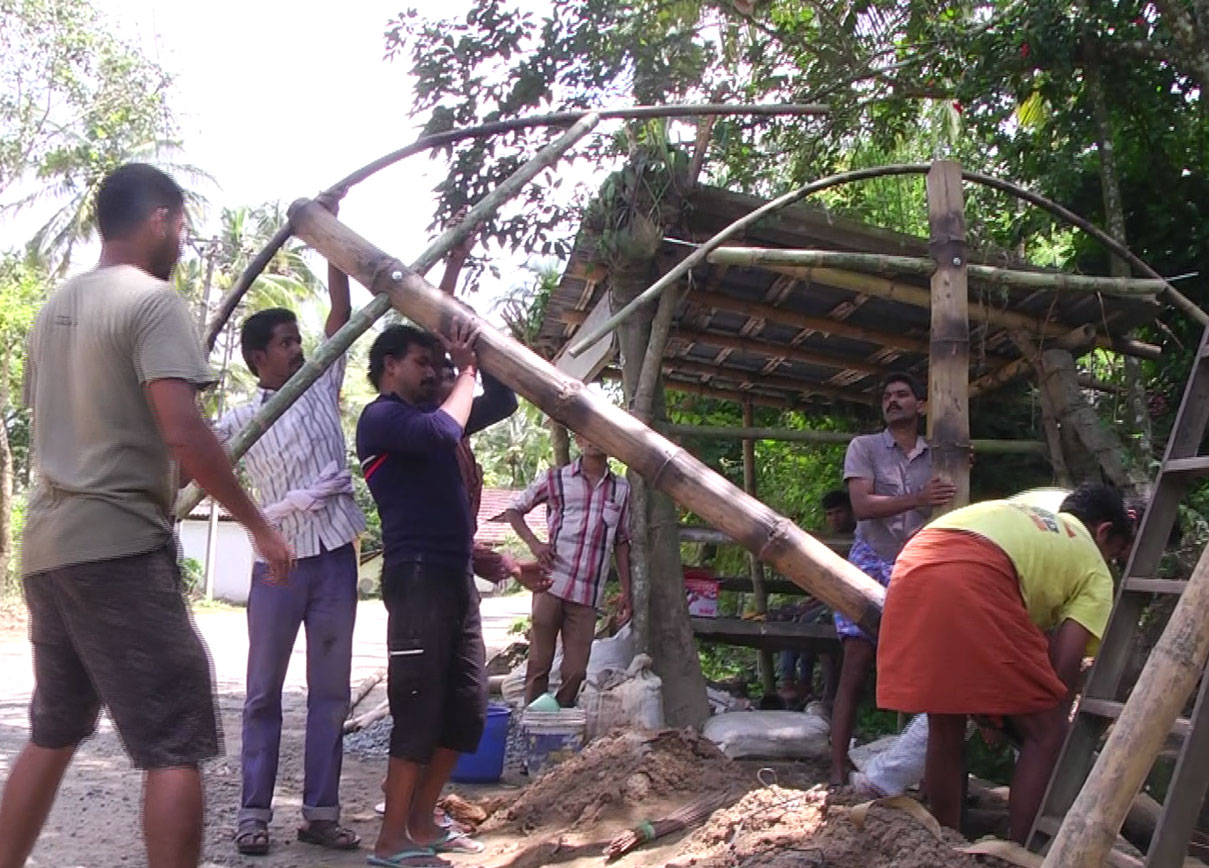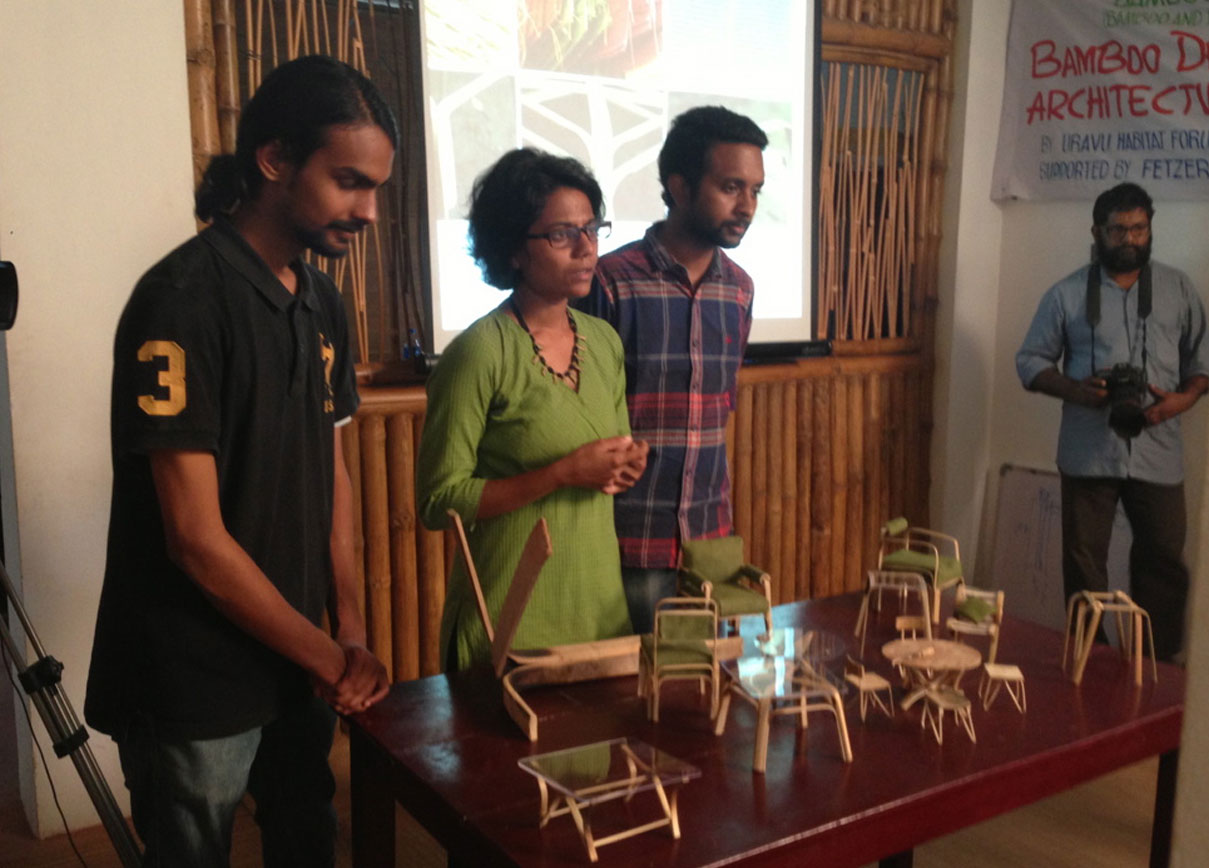Project Activities

Design Workshop
As part of the Bamboo Log Project, Uravu and its partners have organised a one-month design workshop in May/June 2015. The basic idea of the workshop for design and architecture students from all over India was to prepare design options for houses of the rural poor and furniture for these houses. The beneficiaries of the houses were the socio-economic class that would be eligible for a house under the Indira AwasYojana (IAY) government scheme. The furniture items were based on furniture needs of the low income rural and urban households. The workshop involved students of architecture, interior and furniture design, as well as young professionals from across the country using bamboo as a principal material. That design students and young professionals working with the poor communities and the traditional bamboo artisans in an equal status and participatory manner was at the core of the workshop.
Refinement Of The Designs
Further refinement of the furniture designs was done by experienced professionals and Uravu’s artisans.


Construction Of Demonstration Units
Two houses (one of 350 sq. ft and one of 450 sq. ft) and a Community Centre were constructed as demonstration units under the Bamboo Log Project, besides a full size set of furniture to demonstrate the use of bamboo.
The two houses represent buildings that can be constructed under the Indira AwasYojana scheme, which was set up by the Indian Government for the rural poor. One house is of 350 sq. ft and the other is of 450 sq. ft. The houses were constructed for two beneficiary families. Their needs and desires were also taken into account whilst designing and building the houses. This involvement of the beneficiaries is purposefully done to propose a new work culture for IAY houses where involvement of beneficiaries is usually almost absent during the design process of the houses.
The 350 sq. ft house was being constructed for Mrs Meenakshi and her husband; and the 450sq. ft house was constructed for Mrs Bindu and her family comprising her husband and two daughters.
The 450 house is constructed on a raised platform to showcase a model that can withstand problems caused by minor floods in the region during the monsoon season.
The aim of constructing a Community Centre was to develop a social platform for women, children and old age people. The centre will have facilities for local level gatherings,recreation and sports facilities,as well as a reading room and a toy library.
Exploring Scaling up Potential
This project has further explored the potential of bamboo as a construction material for large scale government housing schemes. An aim of the project is also to promote bamboo as a mainstream construction material and thereby creating income augmentation/employment for the traditional bamboo artisans and workers. During the project, various issues came up and were addressed such as constraints in resource management, availability of quality materials and construction workers with the required skill sets and the need of quality parameters regarding the type of bamboo that can be used for the construction of houses.


Bamboo Workers Training
In October 2016, a workshop for 15 bamboo craftsmen was organised by Uravu. The fresh recruits were trained for ten days in the premises of Uravu and Thrikkaipetta village. As part of their training, a bamboo bus-stop in front of Uravu and a bamboo bridge were constructed by the team jointly with some of Uravu’s trainers and artisans.
Visual Documentation
The idea was to document the process of the Bamboo Log Project, namely the development of the construction and furniture products visually. C. Rajagopal directed the filming process, supported by his very dedicated cinematographer Ashokan C.M. This lead to several documentaries, which illustrate the two-year process.


Final Bamboo Log Workshop
The objective of the final seminar and workshop is to involve state level policy makers, bamboo focused state agencies, professionals, non-governmental organisations, artisans, private agencies in the bamboo business, educational institutions and other stakeholders to discuss issues related to usage of bamboo in affordable housing, furniture making and other products.
National Design Competition
The overall idea of this national design competition was to sensitize architecture students and young architects on topics related to construction for low-income segments of the Indian society with sustainable materials. An important aspect was to include the views and needs of the beneficiaries. This culminates in the seminar during the final exhibition, where these young and aspiring architects will get into discussions with people from tribal communities. The aim is to come up with useful solutions that support beneficiaries in effective and innovative ways.

